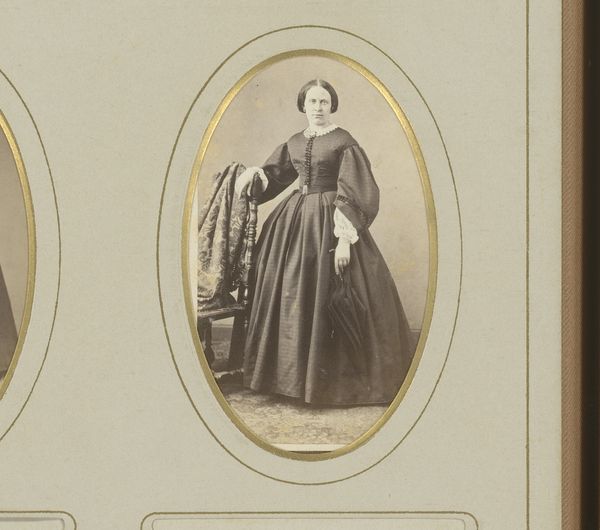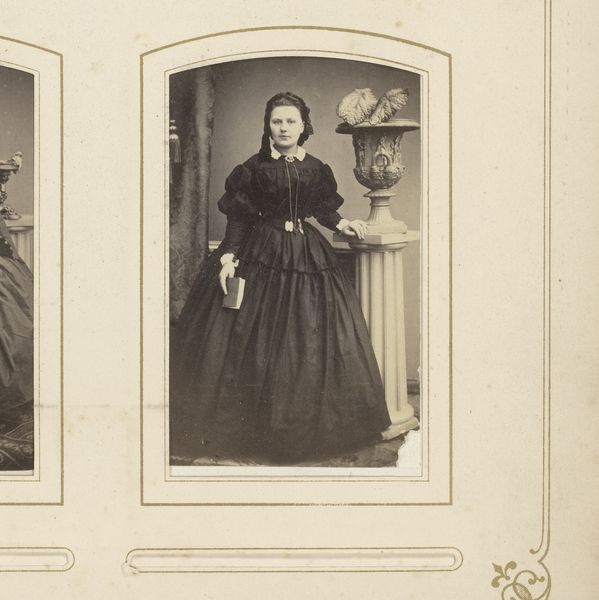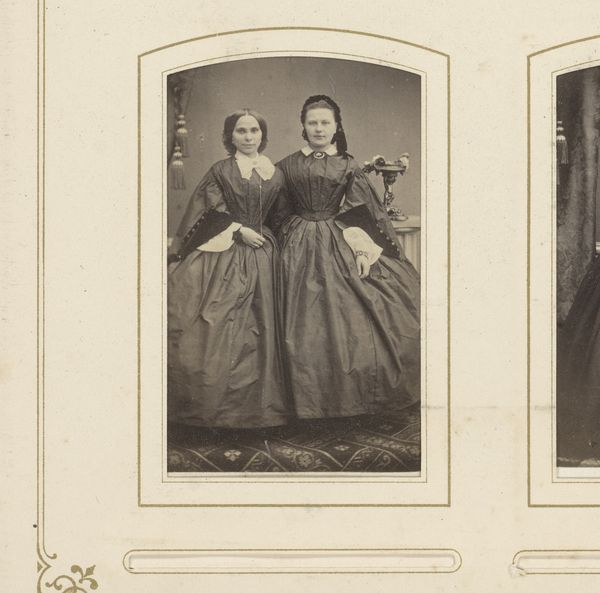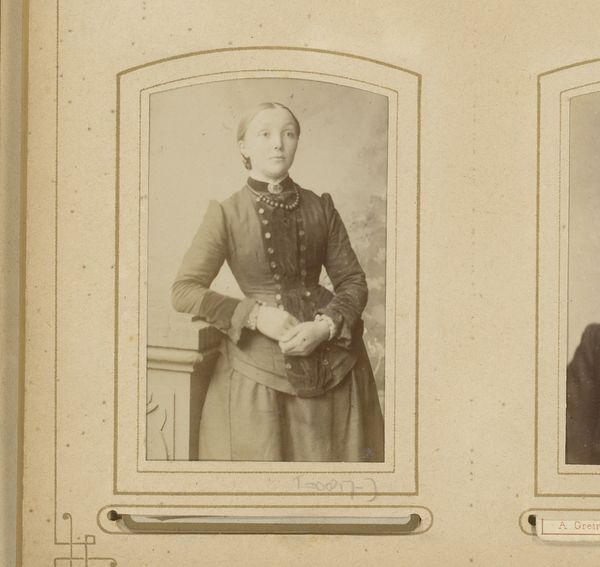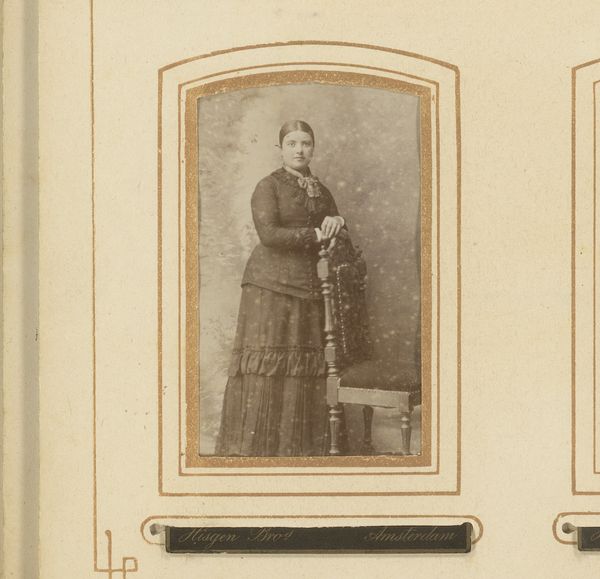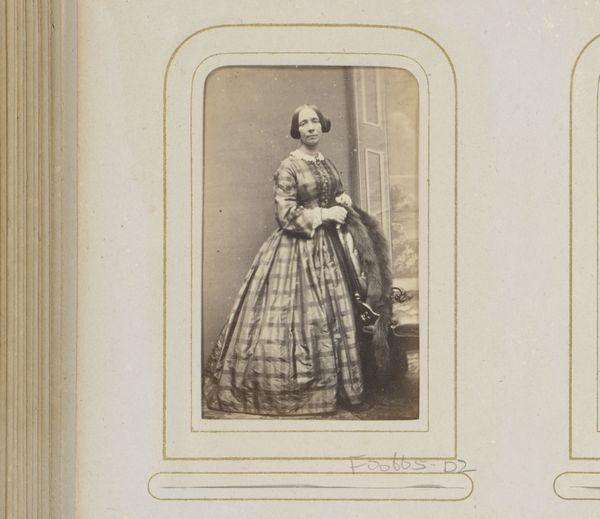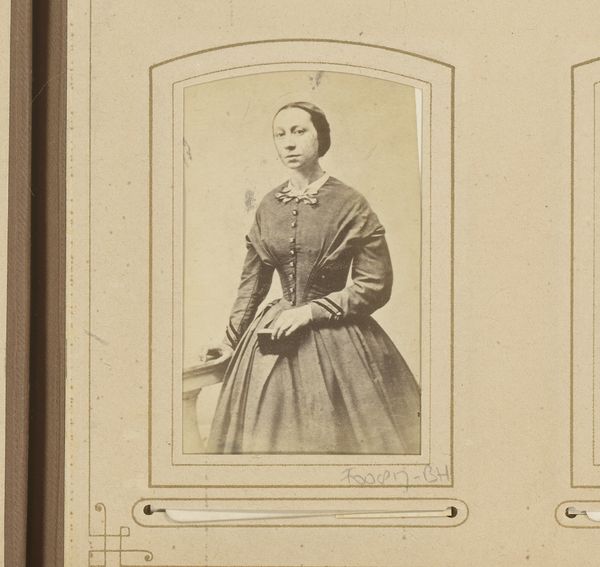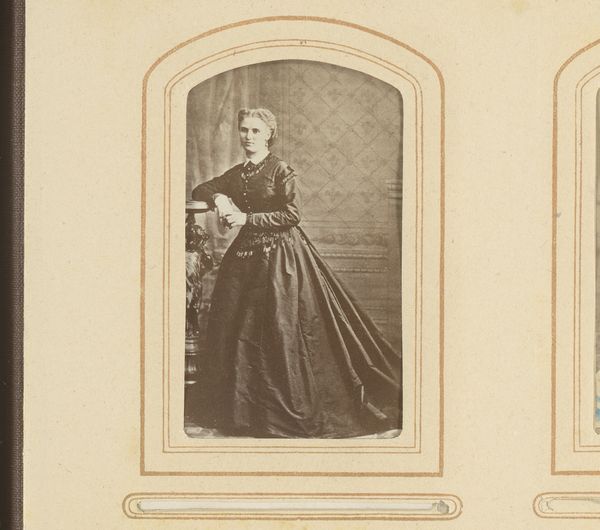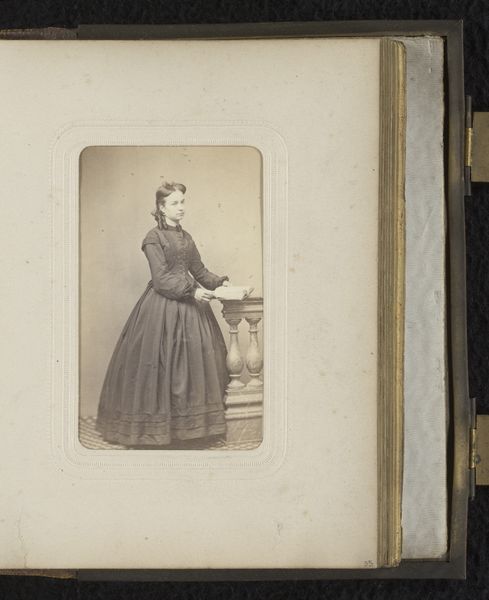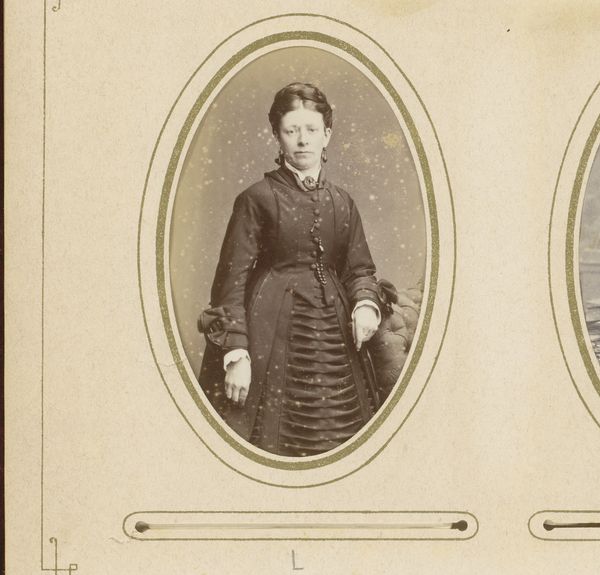
photography
#
portrait
#
photography
#
group-portraits
#
19th century
#
academic-art
Dimensions: height 84 mm, width 51 mm
Copyright: Rijks Museum: Open Domain
Editor: Here we have "Portret van twee staande vrouwen," a photograph taken sometime between 1859 and 1874 by Jules Géruzet. There’s a stillness and formality about it that makes me wonder about the social conventions of the time. What can you tell me about this photograph? Curator: It’s interesting how you pick up on that sense of formality. Group portraits in the mid-19th century were often exercises in controlled presentation, reflecting the social status and aspirations of the subjects. Notice how their dresses, while similar, suggest a hierarchy or perhaps different roles within a household. Consider the emerging role of photography in shaping social memory and reinforcing bourgeois ideals. How do you think this image functioned in its original context? Editor: I hadn’t thought about it that way. Maybe it was a way to present a unified, respectable front to the world? A kind of family branding, perhaps? Curator: Exactly! And remember the limited availability of photography at the time. A portrait like this was a significant investment, making it all the more crucial to convey a particular message. The backdrop is plain and it all feels very posed and formal, like something from Academic art. Editor: It is fascinating to consider how the scarcity and cost of photography at the time could shape how someone was portrayed! It seems to imply a very different form of social media than our current context. I guess I learned that seemingly simple images can reflect larger historical forces at play. Curator: Precisely. It’s about looking beyond the surface and understanding the socio-political forces that shaped both the creation and the reception of the work.
Comments
No comments
Be the first to comment and join the conversation on the ultimate creative platform.
